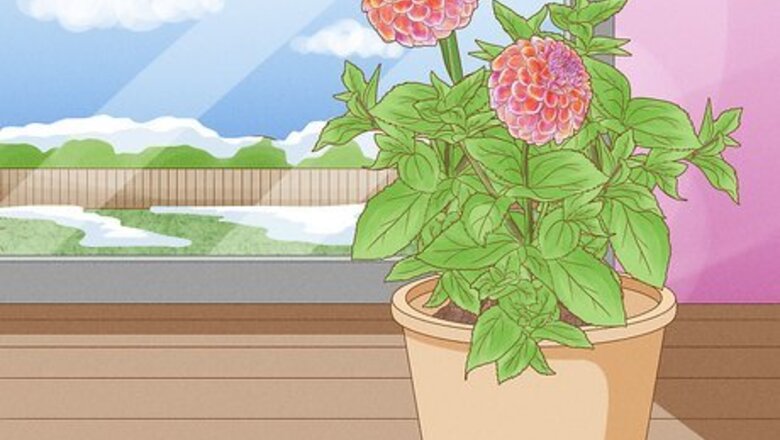
views
Preparing the Dahlias for Overwintering Indoors

Overwinter your dahlias indoors to prevent them from freezing and to give them a rest. Although dahlias can survive outdoors in US hardiness zones 7 to 10, they will need to be brought indoors in colder areas over the winter months to prevent them from freezing. However, many gardeners lift their dahlias for the winter even where they are hardy to inspect them and give them a rest over the winter. This rest is believed to encourage the overall health of the plant and more profuse flowering.
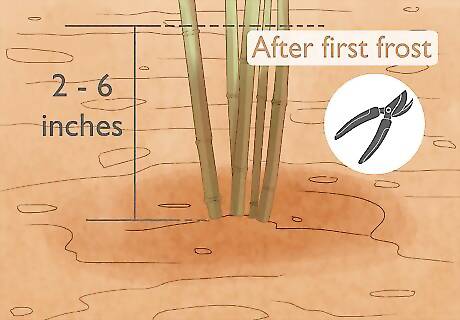
Dig up the dahlias immediately after the first frost. Leave the dahlias in the ground until the first hard frost kills the leaves and stems and causes the tubers to begin to go dormant for the winter. Once the foliage has blackened, dahlias can be trimmed to about 2 to 6 inches (5.1 to 15.2 cm) in height so that the roots are easier to remove. It is best to wait for a day it is not raining to dig up the plants.
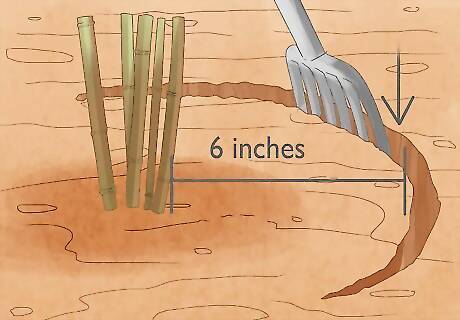
Carefully lift the tubers with a garden fork. Once you are ready to dig up the tubers, push the garden fork into the soil about 6 inches (15.2 cm) away from the flowers. Do this all the way around the plant to loosen the soil, being careful not to pierce the tubers. Push the garden fork into the soil again and pull back on the handle to lift the tubers up out of the soil. A dirt shovel can also be used for this purpose but garden forks work better. Be careful not to damage the outer “skin” of the tubers. Damaged outer skin opens the tuber up to disease pathogens.
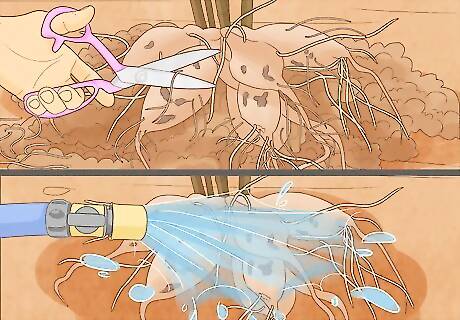
Trim and clean the dug-up tubers. Gently trim the dead stems off the tubers and break off any large clumps of soil by hand. Wash the remaining dirt off with a hose to reduce the possibility of fungal disease. This can be done by placing them on a piece of hardware cloth suspended over a garbage can or by simply spreading them out on a picnic table and running the water over the tubers until the soil is washed off.
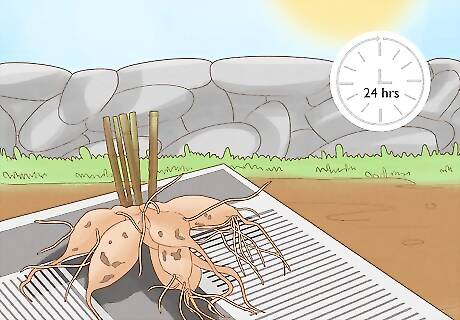
Dry out the tubers before storing. Lay out some newspapers on a flat surface within a protected area where the tubers will not be exposed to sun or wind. Set the tubers on the newspaper and let them dry for 24 hours before storing - this helps to prevent fungal infection. Alternatively, you can hang the tubers upside down by their stems for one to two weeks in a cool, arid place until they are dry.
Storing the Dahlias
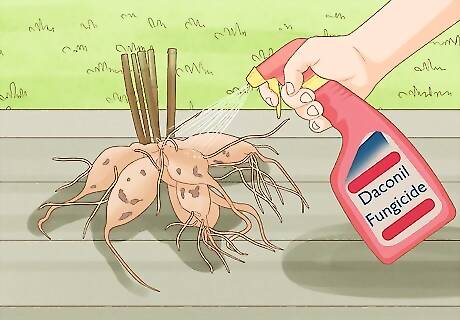
Coat the tubers with a fungicide before storing. The American Dahlia Society suggests either drenching the tubers with a liquid fungicide such as Daconil or coating them with inexpensive sulfur dust before storing, in order to prevent fungal growth. The latter method involves mixing approximately three cups of vermiculite and a teaspoon of sulfur dust together in a plastic bag. The tubers are coated by placing them in the bag and shaking it up. However, this method may require some further experimentation by home gardeners in order to find the ratio that works best for them.

Pack the dried tubers into a box. Perfectly dry and fungicide-treated tubers can be stored in a box that is first lined with newspaper, then covered with peat moss. Layers of moss and dahlia tuber should be alternated until the container is almost full or all the dahlias are inside. They should be topped with a final layer of moss then covered with a layer of newspaper before the box is closed up. Dahlia tubers can also be stored in boxes or trays of dry mediums such as sand, compost, or potting soil. If one has different types of dahlia tubers, labeling the storage containers is recommended.
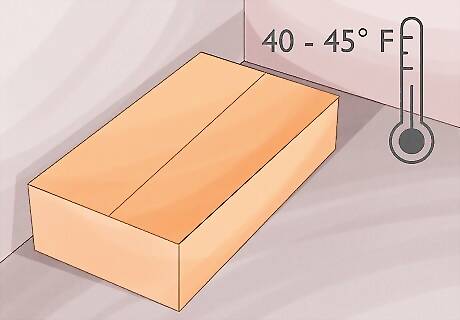
Store the tubers at a temperature between 40 and 45° F. At all stages of storage, keep the dahlia tubers at a temperatures between 40 and 45° Fahrenheit. Temperatures that are any colder may kill them.
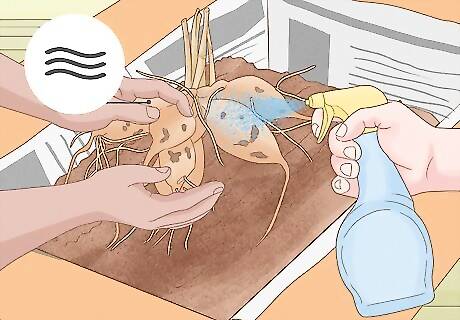
Check the tubers monthly for signs of dryness or disease. Stored dahlia tubers should be checked monthly and spritzed with water if the tubers seem to be drying out. If they are badly dried out, plunging the tubers into a jar of water may be necessary to revitalize them. During the monthly inspection, if gardeners spot any diseased parts they should cut them off and then disinfect the garden implement that was used.
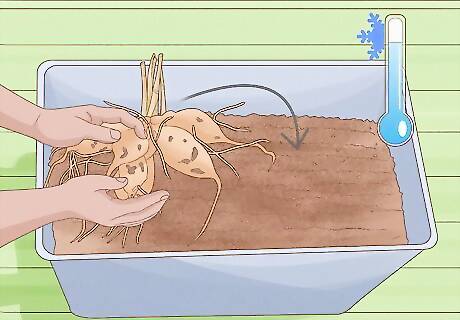
If you live in a very cold area, consider storing the tubers in large containers.Those living in areas with very cold winters may want to store their dahlia tubers in large containers that are suitable for holding full-size plants. In the early spring, the containers can be moved under a window so that the plants are able to start growing, even if the temperatures are not yet warm enough for them to be safely moved outside.

Replant the overwintered bulbs before the last frost. Plant your overwintered dahlia tubers back in the garden in the spring, one or two weeks before the last expected hard frost.
Overwintering Dahlias Outdoors
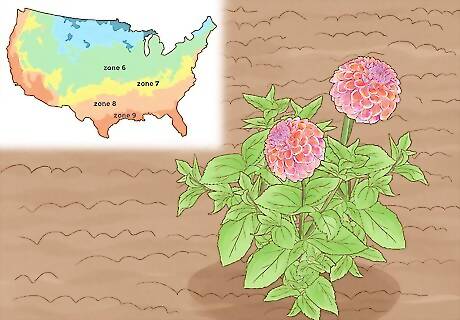
Only overwinter dahlias outdoors in zones 7 to 10. Dahlias will only survive outdoors in winter in zones 7 to 10. These zones refer to the USDA plant hardiness zone map, which divides the US into zones according to their average annual minimum winter temperature. Each zone is 10° warmer (or colder) than the one adjacent to it. You can find out what zone you live in by going to the National Gardening Associations website and entering your zip code.
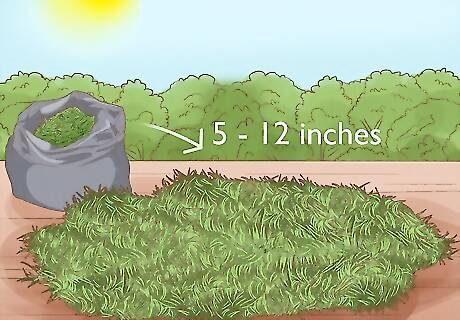
Cover the soil with a layer of mulch. Be sure to use plenty of mulch if the plant tubers will be spending the winter outdoors. The mulch should be between 5 to 12 inches (12.7 to 30.5 cm) thick and can be comprised of wood chips, mushroom compost, grass clippings, or other organic materials.
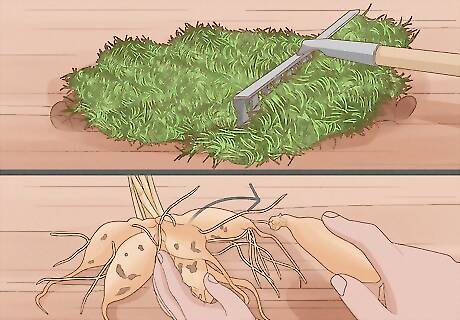
Remove the mulch in early spring and divide the tubers. In the early spring, about March or April, remove the mulch so that the soil warms up properly. Dig up and divide the tubers, then replant them for best results.



















Comments
0 comment